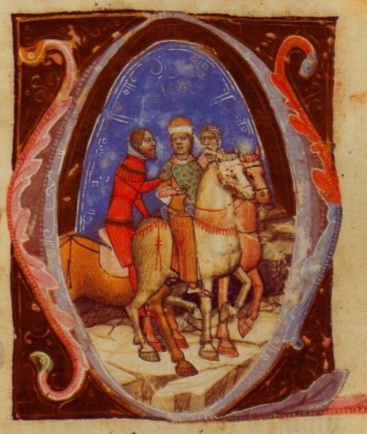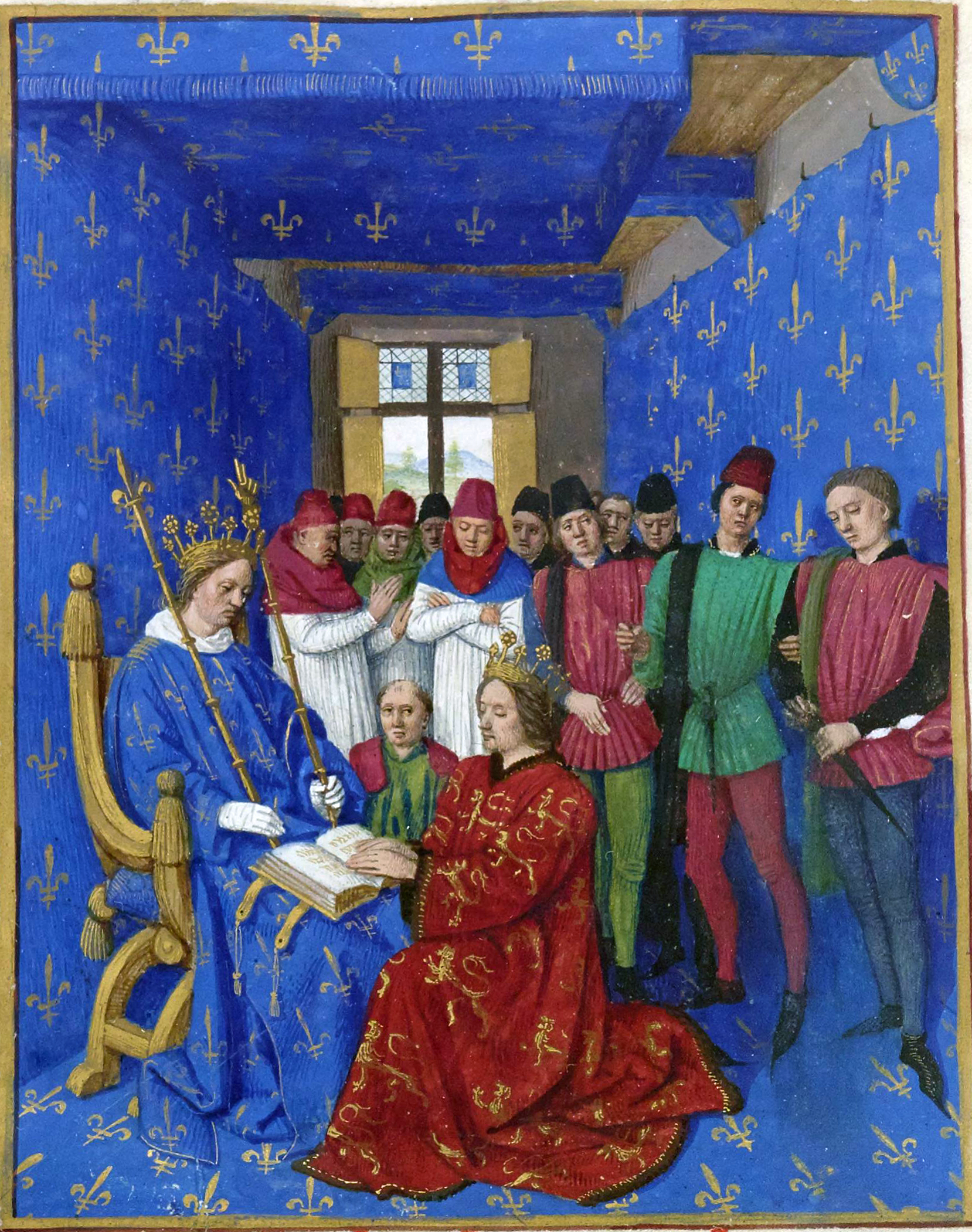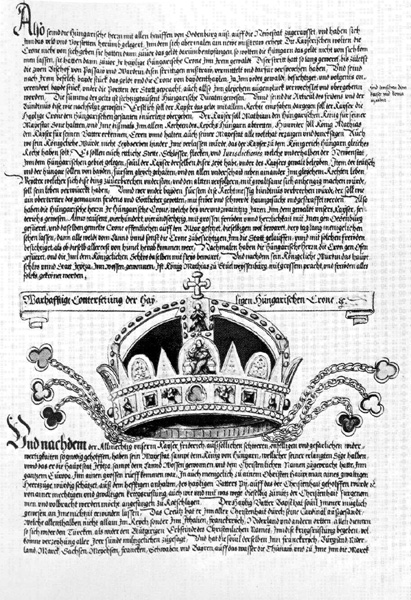|
Charles Robert Of Hungary
Charles I, also known as Charles Robert ( hu, Károly Róbert; hr, Karlo Robert; sk, Karol Róbert; 128816 July 1342) was King of Hungary and Croatia in the union with Hungary, Croatia from 1308 to his death. He was a member of the Capetian House of Anjou and the only son of Charles Martel of Anjou, Charles Martel, Prince of Salerno. His father was the eldest son of Charles II of Naples and Mary of Hungary, Queen of Naples, Mary of Hungary. Mary laid claim to Hungary after her brother, Ladislaus IV of Hungary, died in 1290, but the Hungarian prelates and lords elected her cousin, Andrew III of Hungary, Andrew III, king. Instead of abandoning her claim to Hungary, she transferred it to her son, Charles Martel, and after his death in 1295, to her grandson, Charles. On the other hand, her husband, Charles II of Naples, made their third son, Robert the Wise, Robert, heir to the Kingdom of Naples, thus disinheriting Charles. Charles came to the Kingdom of Hungary upon the invitati ... [...More Info...] [...Related Items...] OR: [Wikipedia] [Google] [Baidu] |
Illuminated Chronicle
The ''Chronicon Pictum'' (Latin for "illustrated chronicle", English: ''Illuminated Chronicle'' or ''Vienna Illuminated Chronicle'', hu, Képes Krónika, sk, Obrázková kronika, german: Illustrierte Chronik, also referred to as ''Chronica Hungarorum'', ''Chronicon Hungarie Pictum, Chronica Picta'' or ''Chronica de Gestis Hungarorum'') is a medieval illustrated chronicle from the Kingdom of Hungary from the 14th century. It represents the great international artistic style of the royal courts in the court of King Louis I of Hungary. The codex is a unique source of art, medieval and cultural history. The chronicle's full name is: ''Chronicon pictum, Marci de Kalt, Chronica de gestis Hungarorum'' (Illustrated Chronicle, Mark of Kalt's Chronicle About the Deeds of the great Hungarians). History of the chronicle The chronicle was written by Mark of Kalt ( la, Marci de Kalt, hu, Kálti Márk) in 1358, with the last of the illuminations being finished between 1370 and 1373. The c ... [...More Info...] [...Related Items...] OR: [Wikipedia] [Google] [Baidu] |
Székesfehérvár Basilica
The Basilica of the Assumption of the Blessed Virgin Mary ( hu, Nagyboldogasszony-bazilika) was a basilica in Székesfehérvár ( la, Alba Regia), Hungary. From the year 1000 until 1527, it was the site of the coronation of the Hungarian monarch. After the Ottomans occupied the city in 1543, coronations of the Hungarian monarch moved elsewhere; the building was extensively damaged in a fire in 1601. It was replaced by the Cathedral Basilica of Székesfehérvár in 1777. Background The Basilica of the Assumption of the Blessed Virgin Mary was built in the late 1010s by Saint Stephen I, the first King of Hungary. It was never episcopal, but it was used as the principal church of the rulers of Hungary. The basilica was the most significant place of the Kingdom of Hungary in the Middle Ages, as it contained the crown jewels, including the throne, the Holy Crown of Hungary, the treasury and the archives. 37 kings and 39 queens were crowned in this basilica and 15 were buried in i ... [...More Info...] [...Related Items...] OR: [Wikipedia] [Google] [Baidu] |
Oligarch (Kingdom Of Hungary)
An oligarch or provincial lord ( hu, tartományúr; formerly the term ''petty king'' was also used) was a powerful lord who administered huge contiguous territories through usurping royal prerogatives in the Kingdom of Hungary in the late 13th and early 14th centuries. List of oligarchs Interregnum (1301–1310) * Amadeus Aba ( Northeast Hungary) * Stephen Ákos ( Borsod) * Stephen Babonić ( Lower Slavonia) * James Borsa ( Transtisia) * Matthew Csák ( Northwest Hungary) * Ugrin Csák ( Upper Syrmia) * Dujam Frankopan ( Primorje) * Ladislaus Kán (Transylvania) * Henry Kőszegi ( Southern Transdanubia and Upper Slavonia) * Ivan Kőszegi (Western Transdanubia) * Stephen Dragutin Nemanjić ( Lower Syrmia) * Nicholas Pok ( Szamosköz) * Dominic Rátót (Nógrád) * Paul Šubić (Croatia , image_flag = Flag of Croatia.svg , image_coat = Coat of arms of Croatia.svg , anthem = "Lijepa naša domovino"("Our Beautiful Homeland") , ... [...More Info...] [...Related Items...] OR: [Wikipedia] [Google] [Baidu] |
Nobility In The Kingdom Of Hungary
The Hungarian nobility consisted of a privileged group of individuals, most of whom owned landed property, in the Kingdom of Hungary. Initially, a diverse body of people were described as noblemen, but from the late 12th century only high-ranking royal officials were regarded as noble. Most aristocrats claimed ancestry from a late 9th century Magyar leader. Others were descended from foreign knights, and local Slavic chiefs were also integrated in the nobility. Less illustrious individuals, known as castle warriors, also held landed property and served in the royal army. From the 1170s, most privileged laymen called themselves royal servants to emphasize their direct connection to the monarchs. The Golden Bull of 1222 enacted their liberties, especially their tax-exemption and the limitation of their military obligations. From the 1220s, royal servants were associated with the nobility and the highest-ranking officials were known as barons of the realm. Only those wh ... [...More Info...] [...Related Items...] OR: [Wikipedia] [Google] [Baidu] |
Pope Boniface VIII
Pope Boniface VIII ( la, Bonifatius PP. VIII; born Benedetto Caetani, c. 1230 – 11 October 1303) was the head of the Catholic Church and ruler of the Papal States from 24 December 1294 to his death in 1303. The Caetani, Caetani family was of baronial origin, with connections to the papacy. He succeeded Pope Celestine V, who had papal resignation, abdicated from the papal throne. Boniface spent his early career abroad in diplomatic roles. Boniface VIII put forward some of the strongest claims of any pope to temporal as well as spiritual power. He involved himself often with foreign affairs, including in France, Sicily, Italy and the First War of Scottish Independence. These views, and his chronic intervention in "temporal" affairs, led to many bitter quarrels with Albert I of Germany, Philip IV of France, and Dante Alighieri, who placed the pope in the Eighth Circle of Hell in his ''Divine Comedy'', among the simony, simoniacs. Boniface systematized canon law (Catholic Church), ... [...More Info...] [...Related Items...] OR: [Wikipedia] [Google] [Baidu] |
Holy Crown Of Hungary
The Holy Crown of Hungary ( hu, Szent Korona; sh, Kruna svetoga Stjepana; la, Sacra Corona; sk, Svätoštefanská koruna , la, Sacra Corona), also known as the Crown of Saint Stephen, named in honour of Saint Stephen I of Hungary, was the coronation crown used by the Kingdom of Hungary for most of its existence; kings have been crowned with it since the twelfth century. The Crown symbolized the King's authority over the Lands of the Hungarian Crown (the Carpathian Basin), and it was a key mark of legitimacy. Through the history of Hungary, more than fifty kings were crowned with it, until 1916 and the last king Charles IV. The only kings not so crowned were Wladyslaw I, John Sigismund Zápolya and Joseph II. The enamels on the crown are mainly or entirely Byzantine work, presumed to have been made in Constantinople (present-day Istanbul, Turkey) in the 1070s. The crown was presented by the Byzantine Emperor Michael VII Doukas to the King Géza I of Hungary; both are depic ... [...More Info...] [...Related Items...] OR: [Wikipedia] [Google] [Baidu] |
Paul I Šubić Of Bribir
Paul I Šubić of Bribir ( hr, Pavao I. Šubić Bribirski, hu, bribiri I. Subics Pál; c. 1245 – 1 May 1312) was Ban of Croatia between 1275 and 1312, and Lord of Bosnia from 1299 to 1312. As the oldest son of Stephen II of the Šubić noble family, he inherited the title of count of Bribir. He was appointed ban in 1273. He was relieved from duty in 1274, following his involvement in disputes between the Dalmatian coastal cities of Trogir and Split, and was returned to office in 1275. With the help of his brothers, Mladen I and George I, Paul imposed direct rule over most of the coastal cities. The contest over the lands of the Kačić family in southern Croatia, who were known for piracy in the Adriatic Sea, brought Paul into conflict with the Republic of Venice. At the same time, the Šubićs became allies with the House of Anjou from Naples. Fighting with Venice continued intermittently until a peace treaty in 1294. During the succession crisis of the 1290s, Paul emerge ... [...More Info...] [...Related Items...] OR: [Wikipedia] [Google] [Baidu] |
Kingdom Of Naples
The Kingdom of Naples ( la, Regnum Neapolitanum; it, Regno di Napoli; nap, Regno 'e Napule), also known as the Kingdom of Sicily, was a state that ruled the part of the Italian Peninsula south of the Papal States between 1282 and 1816. It was established by the War of the Sicilian Vespers (1282–1302), when the island of Sicily revolted and was conquered by the Crown of Aragon, becoming a separate kingdom also called the Kingdom of Sicily. In 1816, it reunified with the island of Sicily to form the Kingdom of the Two Sicilies. The territory of the Kingdom of Naples corresponded to the current Italian regions of Campania, Calabria, Apulia, Basilicata, Abruzzo, Molise and also included some areas of today's southern and eastern Lazio. Nomenclature The term "Kingdom of Naples" is in near-universal use among historians, but it was not used officially by the government. Since the Angevins remained in power on the Italian peninsula, they kept the original name of the Kingdom ... [...More Info...] [...Related Items...] OR: [Wikipedia] [Google] [Baidu] |
Robert The Wise
Robert of Anjou ( it, Roberto d'Angiò), known as Robert the Wise ( it, Roberto il Saggio; 1276 – 20 January 1343), was King of Naples, titular King of Jerusalem and Count of Provence and Forcalquier from 1309 to 1343, the central figure of Italian politics of his time. He was the third son of King Charles II of Naples and Mary of Hungary, and during his father's lifetime he was styled Duke of Calabria (1296–1309). Biography Robert was born around 1276, the third son of the future Charles II of Naples (then heir apparent) and his wife Mary of Hungary. His father was the son of the incumbent King of Naples, Charles of Anjou, who had established an Italian realm a decade earlier in 1266. During the Sicilian Vespers directed against his grandfather Charles, Robert was the hostage of Peter III of Aragon, his grandfather's enemy. In 1285, Robert’s grandfather died at Foggia in Italy, leading to his father (then a hostage) becoming King of Naples as Charles II, with Robert's elder ... [...More Info...] [...Related Items...] OR: [Wikipedia] [Google] [Baidu] |
Prelate
A prelate () is a high-ranking member of the Christian clergy who is an ordinary or who ranks in precedence with ordinaries. The word derives from the Latin , the past participle of , which means 'carry before', 'be set above or over' or 'prefer'; hence, a prelate is one set over others. The archetypal prelate is a bishop, whose prelature is his particular church. All other prelates, including the regular prelates such as abbots and major superiors, are based upon this original model of prelacy. Related terminology In a general sense, a "prelate" in the Roman Catholic Church and other Christian churches is a bishop or other ecclesiastical person who possesses ordinary authority of a jurisdiction, i.e., of a diocese or similar jurisdiction, e.g., ordinariates, apostolic vicariates/ exarchates, or territorial abbacies. It equally applies to cardinals, who enjoy a kind of "co-governance" of the church as the most senior ecclesiastical advisers and moral representatives of th ... [...More Info...] [...Related Items...] OR: [Wikipedia] [Google] [Baidu] |
Ladislaus IV Of Hungary
Ladislaus IV ( hu, IV. (Kun) László, hr, Ladislav IV. Kumanac, sk, Ladislav IV. Kumánsky; 5 August 1262 – 10 July 1290), also known as Ladislaus the Cuman, was King of Hungary and Croatia from 1272 to 1290. His mother, Elizabeth, was the daughter of a chieftain from the pagan Cumans who had settled in Hungary. At the age of seven, he married Elisabeth (or Isabella), a daughter of King Charles I of Sicily. Ladislaus was only 10 when a rebellious lord, Joachim Gutkeled, kidnapped and imprisoned him. Ladislaus was still a prisoner when his father Stephen V died on 6 August 1272. During his minority, many groupings of barons — primarily the Abas, Csáks, Kőszegis, and Gutkeleds — fought against each other for supreme power. Ladislaus was declared to be of age at an assembly of the prelates, barons, noblemen, and Cumans in 1277. He allied himself with Rudolf I of Germany against Ottokar II of Bohemia. His forces had a preeminent role in Rudolf's victory over Ottoka ... [...More Info...] [...Related Items...] OR: [Wikipedia] [Google] [Baidu] |
Mary Of Hungary, Queen Of Naples
Mary of Hungary (c. 1257 – 25 March 1323), of the Árpád dynasty, was Queen of Naples by marriage to King Charles II. She was a daughter of Stephen V of Hungary and his wife Elizabeth the Cuman. Mary served as regent in Provence in 1290–1294 and in Naples in 1295–96, 1296–98, and 1302, during the absences of her husband. Family Mary's mother followed the Shamanist religion, like other Cumans. She was considered a Pagan by contemporary Christians of Europe and Elizabeth had to convert to Catholicism in order to marry Maria's father, Stephen. It's unknown at what age she chose Christianity, but could be possible that she was already raised as an Orthodox in the Hungarian royal court since her childhood. Mary was the second of six children. Her sisters, Elizabeth and Catherine both became Queen of Serbia. Another sister, Anna married Andronikos II Palaiologos. Mary's only brother was Ladislaus IV of Hungary. Her paternal grandparents were Béla IV of Hungary and his w ... [...More Info...] [...Related Items...] OR: [Wikipedia] [Google] [Baidu] |







